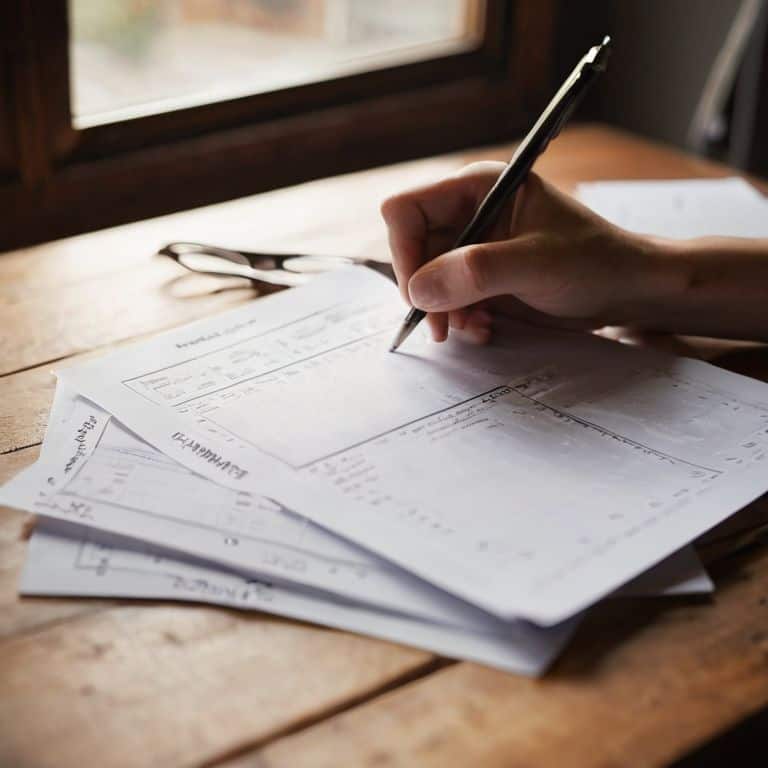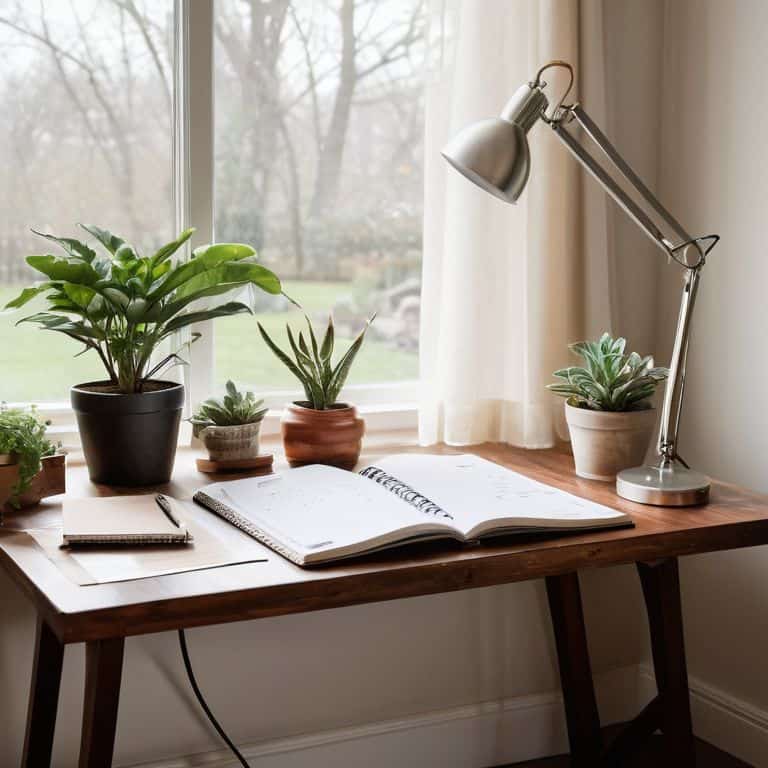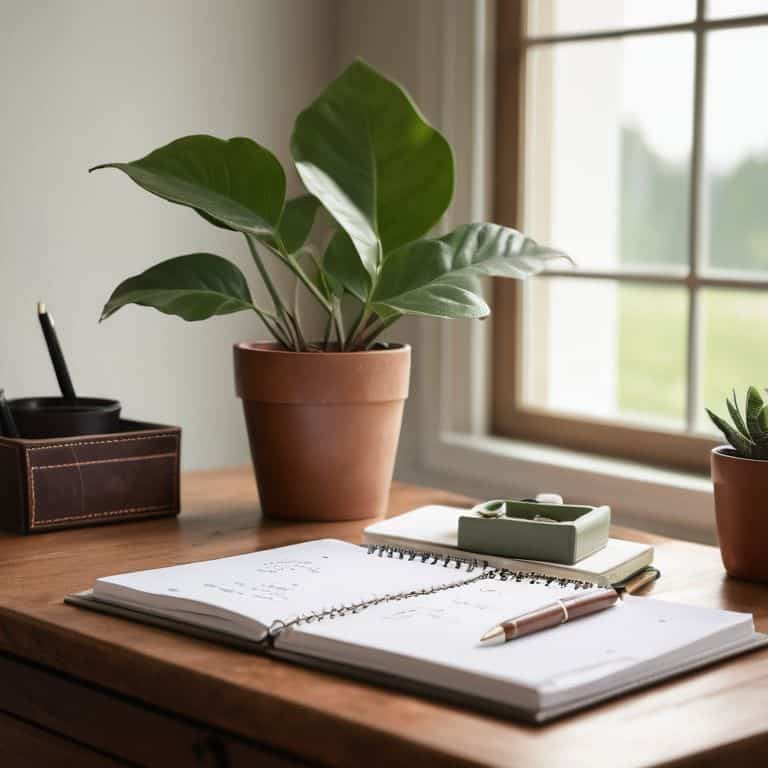I still remember Sundays spent feeling anxious about the week ahead, wondering how to plan your week to make the most of my time. The common advice to “just prioritize” or “use a planner” felt overwhelming, like being told to climb a mountain without a map. The truth is, planning your week doesn’t have to be a daunting task. In fact, breaking it down into simple steps can be incredibly liberating.
As we dive into this guide, I promise to share practical tips and tricks to help you create a weekly plan that actually works for you. You’ll learn how to identify your goals, allocate time for self-care, and make space for spontaneity. By the end of this article, you’ll have a clear understanding of how to plan your week in a way that sets you up for success and reduces stress. So, let’s get started on this journey to a more balanced and peaceful you, one week at a time.
Table of Contents
Guide Overview: What You'll Need

Total Time: 30 minutes to 1 hour
Estimated Cost: $0 – $10
Difficulty Level: Easy
Tools Required
- Pencil (or pen)
- Calendar or Planner (physical or digital)
Supplies & Materials
- Paper or Digital Note-taking Device (for jotting down tasks and appointments)
- Timer or Clock (optional)
Step-by-Step Instructions
- 1. First, let’s start by gathering all the necessary tools to plan your week. This includes a planner or calendar, a pen or pencil, and any other scheduling tools you prefer, such as a digital app on your phone. Take a few minutes to _clear your workspace_ and get comfortable, so you can focus on the task at hand.
- 2. Next, take some time to _review your upcoming commitments_. Look at your calendar and make a list of any fixed appointments, meetings, or events you have scheduled for the week. This will help you understand your availability and make informed decisions about how to allocate your time.
- 3. Now, let’s talk about setting priorities. Think about what needs to be accomplished during the week, and make a list of your top tasks. Be sure to include both work and personal responsibilities, such as exercise, meal prep, or spending time with family. Try to _categorize your tasks_ into different areas of your life, such as work, self-care, or relationships.
- 4. With your priorities in mind, it’s time to start breaking down large tasks into smaller, manageable chunks. Take each of your top tasks and ask yourself what smaller steps you need to take to complete them. For example, if you need to work on a big project, your smaller steps might include researching, outlining, drafting, and editing.
- 5. Once you have a list of smaller tasks, it’s time to _schedule them into your calendar_. Start by blocking out dedicated time for each task, taking into account your fixed appointments and commitments. Be sure to leave some buffer time between tasks, in case things take longer than expected or you need to take a break.
- 6. As you’re scheduling your tasks, don’t forget to include time for _self-care and relaxation_. This might include activities like reading, taking a walk, or practicing yoga. Remember, taking care of yourself is essential to maintaining your energy and focus throughout the week.
- 7. Finally, take a step back and _review your plan_ to make sure it feels realistic and achievable. Ask yourself if there’s anything you’ve forgotten, or if there are any potential roadblocks you need to prepare for. Make any necessary adjustments, and then take a deep breath – you’ve got a clear plan in place to help you navigate the week ahead.
Plan Your Week

As you start planning your week, it’s essential to have a weekly schedule template in place. This will help you visualize your tasks and appointments, making it easier to manage your time effectively. I like to think of it as creating a roadmap for my week, where I can see all the twists and turns ahead. When filling out your template, be sure to leave some buffer time for unexpected tasks or emergencies.
When it comes to filling out your schedule, prioritizing tasks effectively is crucial. Take some time to reflect on what needs to be done, and then rank your tasks in order of importance. This will help you focus on the most critical tasks first, and avoid feeling overwhelmed by less pressing matters. I find that using a planner for productivity really helps me stay on track and avoid distractions.
To make the most of your plan, it’s also important to set realistic goals and deadlines. Be honest with yourself about what you can accomplish in a day or a week, and don’t be too hard on yourself if things don’t go exactly as planned. Remember, the goal is to create a more balanced and calm week, not to add more stress to your life. By using your planner and schedule wisely, you can avoid burnout and make steady progress towards your goals.
Prioritizing Tasks Effectively
Now that we have our weekly schedule template in place, let’s talk about prioritizing tasks effectively. This is where the magic happens, and your week starts to feel truly manageable. I like to think of it as curating a bookstore shelf – you want to put the most important books (or tasks) front and center.
To prioritize, ask yourself: what needs to be done today or this week to make the biggest impact? What tasks will bring you closer to your goals or reduce stress? Make a list, and then rank them in order of importance. Don’t worry too much about the ‘how’ just yet – just focus on getting your priorities straight.
Using a Weekly Schedule Template
Using a weekly schedule template can be a game-changer. It helps you visualize your tasks and appointments, making it easier to prioritize and manage your time. I recommend downloading a printable template or using a digital tool like Google Calendar or Trello to create your schedule. Start by blocking out fixed appointments, work hours, and personal commitments. Then, fill in dedicated time slots for tasks, self-care, and relaxation.
By using a template, you’ll be able to see your week at a glance and make adjustments as needed. Don’t forget to leave some buffer time for unexpected tasks or activities – it’s all about finding a balance that works for you. With a weekly schedule template, you’ll be able to plan your week with confidence and clarity, setting yourself up for a more productive and peaceful week ahead.
5 Essential Tips to Plan Your Week with Ease

- Start by reviewing your previous week to identify what worked and what didn’t, helping you refine your approach
- Set clear, achievable goals for the upcoming week, ensuring they align with your long-term objectives
- Use a weekly schedule template to organize your tasks, leaving space for flexibility and spontaneity
- Prioritize tasks based on their urgency and importance, focusing on the most critical ones first
- Schedule time for self-care and relaxation, recognizing that a balanced week is key to productivity and happiness
Your Sunday Sanity Savior: 3 Key Takeaways
Break down your week into tiny, manageable chunks to reduce stress and increase productivity
Use a weekly schedule template to stay organized and ensure all tasks are accounted for
Prioritize tasks effectively by focusing on high-impact activities first and leaving space for self-care and flexibility
Planning Wisdom
By carving out a few moments each week to reflect, plan, and prioritize, you’re not just scheduling tasks – you’re crafting a life that breathes space, clarity, and purpose into every day.
Hannah Jensen
Wrapping Up: Your Path to a Calmer Week
As we’ve explored the world of week planning, I hope you’ve found the steps to be incredibly straightforward and easy to follow. From using a weekly schedule template to prioritizing tasks effectively, each action brings you closer to a sense of control and calm. Remember, the goal isn’t to overschedule every moment, but to create a balance that allows for both productivity and relaxation. By taking these simple steps, you’re not just planning your week; you’re investing in your well-being.
So, as you move forward with your newfound planning skills, keep in mind that flexibility is key. Don’t be too hard on yourself if your schedule needs adjusting. The real power of planning your week lies in its ability to reduce stress and increase joy. With each passing week, you’ll find yourself more confident in your ability to manage your time and tackle challenges head-on. Here’s to a calmer, more organized you, one week at a time.
Frequently Asked Questions
How do I account for unexpected tasks or emergencies in my weekly plan?
Don’t worry, life can be unpredictable. For unexpected tasks or emergencies, I recommend leaving some buffer space in your weekly schedule. You can also have a ‘flex task’ slot, where you can fit in unexpected things that come up. Think of it as a ‘miscellaneous’ category, so you’re prepared for anything that might arise.
What's the best way to prioritize tasks when everything seems important?
When everything seems important, I recommend the Eisenhower Matrix. It’s a simple tool that helps you categorize tasks into urgent vs. important, and focus on the most critical ones first. Divide a piece of paper into four quadrants: urgent & important, important but not urgent, urgent but not important, and not urgent or important. This will help you prioritize and make a more manageable to-do list.
Can I use a digital calendar or app to plan my week, or is a physical planner more effective?
Absolutely, you can use a digital calendar or app to plan your week. I’m a fan of both digital and physical tools, and what matters most is finding what works best for you. Some popular apps include Google Calendar, Trello, or Todoist, which can be just as effective as a physical planner for staying organized.
